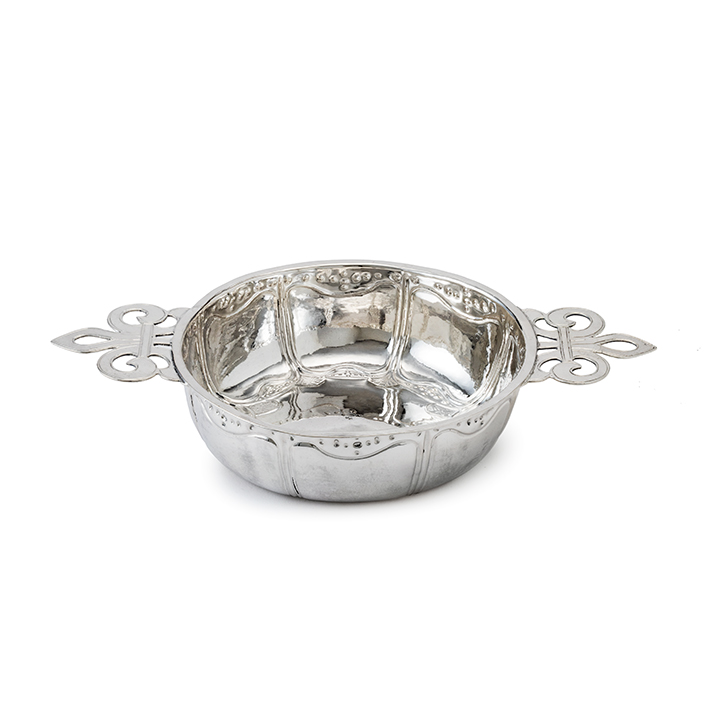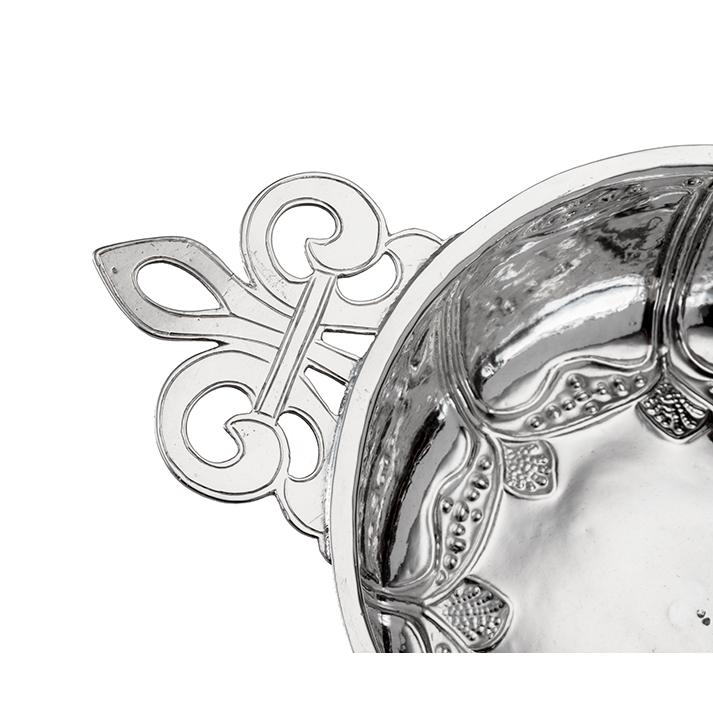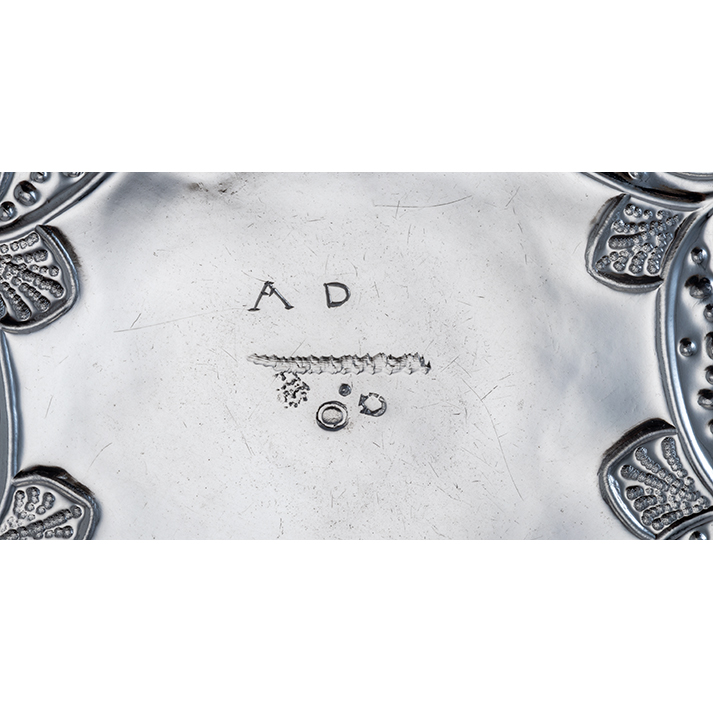
Dutch silver two-handled bowl
About This Project
A Dutch silver two-handled bowl
Guilliam Domis I
Breda, 1682
128 grams; 23.5 cm wide (incl. handles)
The circular bowl with flat openwork and engraved handles on both sides in the shape of stylized lilies is surrounded by chased lobate panels, between a dotted decoration, alternating on the bottom rim with chased stylized foliage. Fully marked at the reverse and displaying assay stripes on the reverse of the bowl and the handles.
The two-handled silver bowl must be a porridge bowl rather than a brandy bowl. It must have been the mother who used this bowl for feeding porridge to the infants. A striking image of this can be seen in a painting from 1683, made by Michiel van Musscher. He depicted his wife Eva Visscher with the children. On the table a two-handled bowl with a spoon is placed.
The use of brandy bowls is only known in the northern provinces of Groningen, Friesland and West-Friesland. The bowls with two handles, made in the southern Netherlands, will have been used as porridge bowls.
The handles in the shape of a stylized fleur-de lis stand out in this bowl. The fleur-de-lis is often used as decoration in the southern Netherlands. In Christianity, white lilies symbolize purity and chastity and can therefore refer to the Virgin Mary, the mother of Christ, but also to Christ himself or the Holy Trinity because of the three petals. The lily can therefore symbolize faith, wisdom and purity.
The silversmith
Guilliam Domis I (Breda 1633-1689), son of Willem Frans Domies and Maria Augustini Henrici Wils, was apprenticed to the Antwerp silversmith Nicolaes Willemsen, from 17 March 1653. In April 1662 he was registered as a master silversmith in Breda. He himself took on a number of apprentices and held the position of dean at the Breda silversmiths’ guild, from 1664-1671, 1683 and 1687. Thirteen children are known from his marriage to Maria Theresia Florens, two of whom were trained as silversmiths, Gulhelmus II and Franchois. Guilliam Domis I had two maker’s marks: lozenge in shield, one without and one with two dots above the lozenge. In 1670 he bought the house Het Beijtelschip. In 1680 he was based in the house De Trouwrinck near the Grote Markt. During his active life he made a lot of liturgical vessels, including a chalice (1662), two pairs of altar cruets (1662 and 1670?), a wafer box (1671), and a pair of elaborately chased wall sconces (1672-73), possibly made for a beguinage. Guilliam Domis I died on 29 December 1689 and was buried on 2 January 1690 in the Grote Kerk in Breda.
For more information, click here





